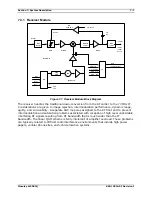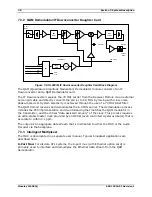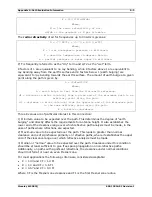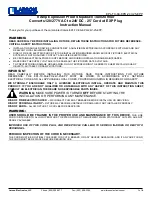
A-4
Appendix A: Path Evaluation Information
Moseley SL9003Q
602-12016-01 Revision J
A.1.5 Path Profiles
Using ground elevation information obtained from the topographical map, a path profile
should be prepared using either true earth or 4/3 earth's radius graph paper. To obtain a
clear path, all obstacles in the path of the rays must be cleared by a distance of 0.6 of the
first Fresnel zone radius. Be sure to include recently erected structures, such as buildings,
towers, water tanks, and so forth, that may not appear on the map. Draw 0a straight line
on the path profile clearing any obstacle in the path by the distance determined above. This
line will then indicate the required antenna and/or tower height necessary at each end. If it
is impossible to provide the necessary clearance for a clear path, a minimum clearance of
30 feet should be provided. Any path with less than 0.6 first Fresnel zone clearance, but
more than 30 feet can generally be considered a grazing path.
A.2 Path Analysis
A.2.1 Overview
A path analysis is often the first thing done in a feasibility study. The general evaluation can
be performed before expending resources on a more detailed investigation.
The first order of business for performing a path analysis is to complete a balance sheet of
gains and losses of the radio signal as it travels from the transmitter to the receiver. "Gain"
refers to an increase in output signal power relative to input signal power, while "loss"
refers to signal attenuation, or a reduction in power level ("loss" does not refer to total
interruption of the signal). Both gains and losses are measured in decibels (dB and dBm),
the standard unit of signal power.
The purpose of completing the balance sheet is to determine the power level of the received
signal as it enters the receiver electronics—in the absence of multipath and rain fading; this
is referred to as the unfaded received signal level. Once this is known, the fade margin of
the system can be determined. The fade margin is the difference between the unfaded
received signal level and the receiver sensitivity (the minimum signal level required for
proper receiver operation).
The fade margin is the measure of how much signal attenuation due to multipath and rain
fading can be accommodated by the radio system while still achieving a minimum level of
performance. In other words, the fade margin is the safety margin against loss of
transmission, or transmission outage.
A.2.2 Losses
Although the atmosphere and terrain over which a radio beam travels have a modifying
effect on the loss in a radio path, there is, for a given frequency and distance, a
characteristic loss. This loss increases with both distance and frequency. It is known as the
free space loss and is given by:
A = 96.6 + 20 20log10D
Where,
A = free space attenuation between isotropics in dB.
F = frequency in GHz.
D = path distance in miles.
A.2.3 Path Balance Sheet/System Calculations
A typical form for recording the gains and losses for a microwave path is shown in Section
A.2.7. The purpose of this tabulation is to determine the fade margin of the proposed radio
Summary of Contents for Starlink SL9003Q
Page 86: ...5 22 Section 5 Module Configuration Moseley SL9003Q 602 12016 01 Revision J ...
Page 90: ...6 4 Section 6 Customer Service Moseley SL9003Q 602 12016 01 Revision J ...
Page 110: ...A 10 Appendix A Path Evaluation Information Moseley SL9003Q 602 12016 01 Revision J ...
Page 118: ...D 2 Appendix D Microvolt dBm Watt Conversion 50 ohms Moseley SL9003Q 602 12016 01 Revision J ...
















































